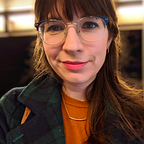Fullstack | Grace Hopper: The Application Process
Applying to a bootcamp is a huge decision, and everyone approaches it differently. I think the most important (if unhelpful) thing to remember is that you are the only person who really knows if it’s going to be a good fit. There will be folks who think it’s crazy to do a bootcamp. There will be folks who think it’s crazy NOT to do a bootcamp. It all really just depends on your personal situation. But, if you’re in the process of making that decision, and a personal story would help you, here is mine:
Also, if you haven’t already, read these wonderful resources from Fullstack and Grace Hopper:
The Process: What you should expect
Preparation Materials: Get up to speed for Grace Hopper Admissions
- RESEARCH — A while ago, I researched a few different bootcamps (App Academy, FullStack and Hack Reactor) while living in the Midwest. I couldn’t relocate at the time, so I put the idea aside. Later, in New York, the time was right and a friend told me about Grace Hopper. I immediately thought it would be a good fit based on their full-stack JavaScript focus and their supportive approach. The icing on the cake? The program was focused on women and offered deferred tuition. Maybe I could actually do this! If I didn’t get in, I could continue working as a producer and studying code in my free time through Free Code Camp.
- CODING TEST — After practicing on Codewars for a few days, and brushing up on my JavaScript skills, I took the coding test. I couldn’t get many specs to pass, and thought I wasn’t far enough along to be accepted. What I now know is that they’re not really looking for a perfect score. They’re looking to see if you’re approaching the problems in the right way and if your logic is in the right place.
- INTERVIEW —A few days after the coding test, I was invited to interview for the program. I’ve always been a ‘people person,’ so this part of the process was less intimidating to me. My interviewer was kind and easy to talk to. The pair programming experience was a first for me and was surprisingly fun — coding in an assessment situation felt less stressful when I could talk through problems with someone else.
- ACCEPTANCE — Fullstack seems philosophically against a ‘pass/fail’ mentality, and has a few different outcomes for applicants. Some are accepted, some are not, and some are ‘tentatively’ accepted and asked to do additional work. My JavaScript skills needed some attention, and so they asked me to complete Foundations Builders (a two-week, online course that works on basic algorithm and JavaScript skills). If I successfully completed that course, I would be accepted to Grace Hopper Academy. The course was interesting, challenging, and incredibly helpful. Given the fast pace of the bootcamp, I’m so grateful I did the extra work beforehand. Two weeks later, I was on my way to Foundations.
Overall, I have to say that the application process was incredibly personalized and well thought out. Along the way, there are a lot of points of contact and opportunities to ask questions, and they really look at a person’s entire background before deciding if they’re a good fit for a program. You never have to worry that one slip-up or error will make or break your application.
Cat tax:
